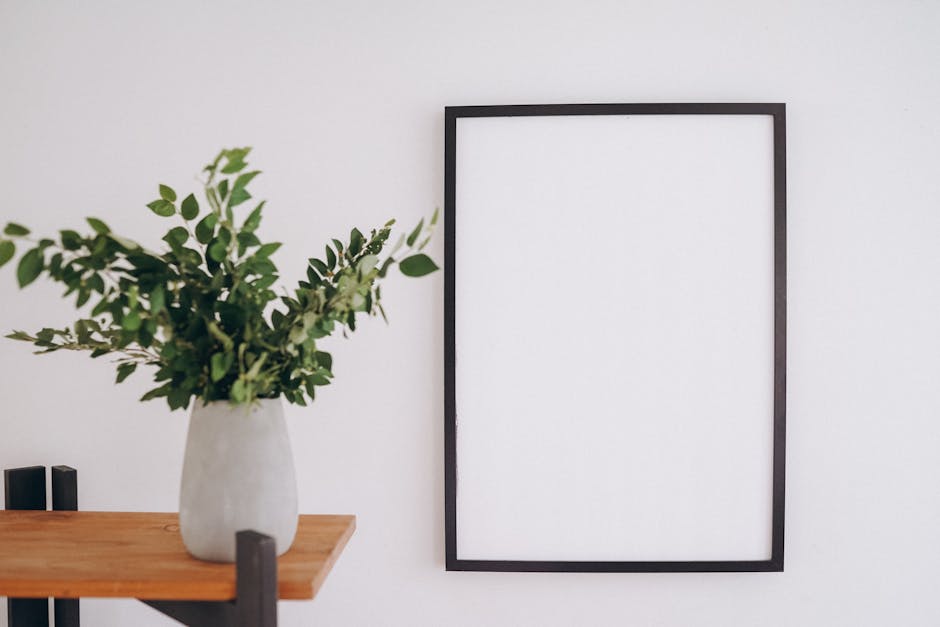Creating a harmonious living room when you and your partner have clashing aesthetic preferences can feel like solving a Rubik’s Cube blindfolded. One might be a minimalist devotee, worshipping clean lines and muted tones, while the other is a maximalist, craving bold patterns, vibrant colors, and trinkets galore. But fear not, lovebirds! Achieving a shared space that reflects both personalities is entirely possible. It requires a strategic approach, a willingness to compromise, and a dash of creative flair. This guide offers a roadmap for turning your decorating dilemma into a design triumph.
Understanding the Style Spectrum: Identifying Your Personal Preferences
Before you start rearranging furniture or battling over paint chips, it's crucial to understand exactly what each of your styles entails. A clear articulation of your preferences avoids vague squabbles and facilitates constructive decision-making. Consider these questions to clarify your aesthetic:
- Color Palettes: What colors draw you in? Are you attracted to warm, earthy tones, cool blues and greens, or a vibrant spectrum of hues? Perhaps it's more of a neutral sanctuary, where grays, creams, and whites reign supreme? Maybe even consider understanding color theory.
- Furniture Styles: Do you prefer the sleek lines of modern furniture, the comfort of traditional pieces, or the eclectic charm of vintage finds? Is mid-century modern calling your name, or do you lean towards bohemian with a twist? What materials do you enjoy the most?
- Patterns and Textures: Are you a fan of bold geometric patterns, delicate florals, or subtle textures? Do you gravitate towards smooth surfaces or rough, organic materials?
- Decorative Accessories: What types of objects do you like to display? Are you drawn to artwork, sculptures, plants, or personal collections? How do these accessories contribute to the overall ambiance?
Once you've both thoroughly answered these questions, compare your notes. Identify areas of overlap and points of divergence. This exercise provides a foundation for finding common ground.
Finding the Middle Ground: Fusion Styles and Compromise Strategies
The key to a successful shared living room is rarely about forcing one style over another, it's about finding a fusion. This mean blending elements from both your distinct tastes to create something that is reflective of both of your personalities. It requires an element of compromise, as well as having a strong understanding of how different elements work together.
Compromise Strategies: Turning Clashes into Complementary Elements
- The 70/30 Rule: Dedicate approximately 70% of the space to a "neutral" style that appeals to both of you. It can be a foundational style like modern, Scandinavian or something in between. With the remaining 30% give each person space to add their individual stylistic influences, such as particular textures, colours, furniture pieces or decorations.
- The Zoning Approach: Designate specific areas of the living room to reflect each partner's style. For instance, one corner could feature a minimalist reading nook with a sleek lamp and a comfortable chair, while another area showcases a collection of eclectic art and vintage finds. Its like creating small personal sanctuaries within the overall room.
- The Material Mix: Employ a variety of materials that appeal to both of you. Mix smooth, modern surfaces with rough, natural textures. Combine metal with wood, linen with leather, and so forth. It creates a multi sensory experience that provides depth and sophistication.
- The Color Harmony: A colour scheme that is generally agreed on is important. It is possible to find a middle ground by choosing a neutral colour scheme and then introducing more personal favourite shades through accessories such as throws, cushions or artwork. Colour theory can be of help to find complementary colors.
Exploring Fusion Styles: Blending Aesthetics for Harmonious Coexistence
- Boho-Modern: This style combines the relaxed, eclectic vibe of bohemian design with the clean lines and functionality of modern style. Think natural materials like rattan and jute, layered with modern furniture pieces and a touch of global-inspired art.
- Industrial-Glam: The raw, edgy aesthetic of industrial design meets the luxurious touches of glam style. Think exposed brick walls paired with velvet sofas, metal accents alongside shimmering chandeliers, and a mix of rustic and refined details.
- Scandinavian-Farmhouse: This style blends the simplicity and functionality of Scandinavian design with the rustic charm of farmhouse style. Think light wood tones, cozy textiles, and a focus on natural light.
- Coastal-Contemporary: This blend pairs a fresh, breezy color palette inspired by the ocean, with sleek, contemporary furniture silhouettes. The result is a relaxed and airy space that feels both modern and inviting.
Practical Implementation: Bringing Your Vision to Life
Once you've identified a fusion style and agreed on some ground rules, it's time to start implementing your vision. This involves making practical decisions about furniture, color schemes, and decorative accessories.
Furniture Selection: Balancing Style and Function
- The Anchor Piece: Choose one or two "anchor" furniture pieces that both of you adore. This could be a sofa, a coffee table, or an entertainment center. Make sure these pieces are functional and comfortable for both of you.
- Mix and Match: Don't be afraid to mix furniture styles. A modern sofa can be paired with vintage armchairs, or a rustic coffee table can be placed in front of a sleek media console. The key is to find pieces that complement each other in terms of color, scale, and texture.
- Think Versatility: Opt for furniture pieces that can be easily reconfigured or repurposed. A modular sofa, a coffee table with hidden storage, or a set of nesting tables can be adapted to different needs and preferences.
- Prioritize Comfort: Don't sacrifice comfort for style. Choose furniture that is comfortable to sit on, lay on, and use on a daily basis.
Color Palette Development: Creating a Cohesive Visual Landscape
- Start with Neutrals: Begin with a neutral base color for the walls and floors. This provides a blank canvas for layering in other colors and patterns.
- Introduce Accent Colors: Use accent colors to add personality and visual interest. Choose colors that complement each other and reflect both of your preferences. Consider using the 60-30-10 rule: 60% of the room is the dominant color, 30% is a secondary color, and 10% is an accent color.
- Incorporate Patterns: Use patterns sparingly to avoid overwhelming the space. Choose patterns that complement the overall color scheme and add visual texture.
- Test Colors Before Committing: Paint swatches on the walls and observe them at different times of day to see how they look in different lighting conditions.
Decorative Accessories: Personalizing the Space
- Art Selection: Choose artwork that reflects both of your interests and styles. Hang a mix of paintings, prints, and photographs to create a gallery wall or display a single statement piece above the sofa.
- Textiles and Throws: Use textiles and throws to add warmth, texture, and color to the space. Choose fabrics that are soft, comfortable, and visually appealing.
- Plants and Greenery: Incorporate plants and greenery to bring life and energy into the living room. Choose plants that are easy to care for and that complement the overall style of the space.
- Personal Collections: Display personal collections in a way that is both visually appealing and meaningful. Group items together in interesting arrangements and use shelves, tables, or display cases to showcase them.
Overcoming Common Pitfalls: Troubleshooting and Problem-Solving
Even with careful planning, decorating a shared living room can present challenges. Here are some common pitfalls and strategies for overcoming them:
- Clutter Control: Clutter can quickly derail even the most well-designed living room. Establish a system for managing clutter and designate specific areas for storing personal belongings. Regularly declutter the space and get rid of anything that is no longer needed.
- Budget Constraints: Decorating can be expensive. Set a budget and stick to it. Prioritize essential items and look for affordable alternatives. Consider shopping at thrift stores, flea markets, and online retailers for unique and budget-friendly finds.
- Communication Breakdown: Communication is key to a successful decorating project. Be open and honest with each other about your preferences and concerns. Be willing to compromise and find solutions that work for both of you.
- Lack of Inspiration: If you're feeling stuck, look for inspiration in magazines, books, and online resources. Visit showrooms and model homes to get ideas. Consult with a professional designer for guidance and advice.
- Fear of Change: Don't be afraid to experiment and try new things. Decorating should be a fun and creative process. Be willing to make mistakes and learn from them.
Maintaining Harmony: Keeping the Peace in Your Shared Sanctuary
Once your living room is complete, it's important to maintain harmony and ensure that the space continues to reflect both of your personalities. Here are some tips for keeping the peace in your shared sanctuary:
- Regularly Evaluate: Periodically assess the living room to ensure that it still meets both of your needs and preferences. Make adjustments as necessary to keep the space functional, comfortable, and visually appealing.
- Embrace Flexibility: Be willing to adapt the living room to changing circumstances. As your tastes evolve or your lifestyle changes, be prepared to make adjustments to the design.
- Respect Boundaries: Respect each other's personal space and belongings. Avoid rearranging furniture or adding new items without consulting each other first.
- Celebrate Differences: Acknowledge and appreciate each other's unique styles and preferences. Embrace the fact that your living room is a reflection of both of your personalities.
- Have Fun! Decorating should be a fun and enjoyable process. Relax, be creative, and enjoy creating a space that you both love.
By following these tips, you can create a shared living room that is not only stylish and functional but also a reflection of your unique relationship. Remember, compromise, communication, and a dash of creativity are the keys to success. Good luck, and happy decorating! The overall goal is a space that is not only aesthetically pleasing but also a true home for both partners.
Last modified: June 14, 2025



